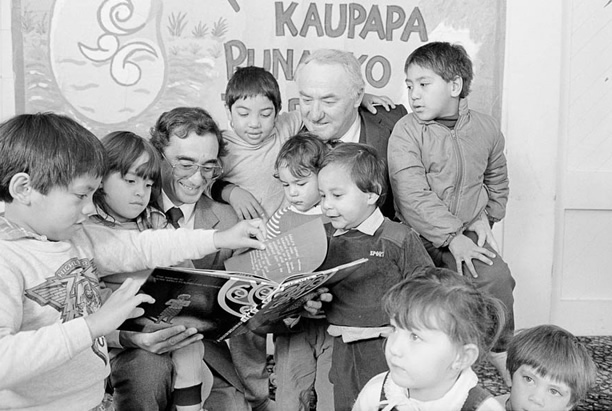
Pukeatua Kōhanga Reo, in Wainuiomata, Lower Hutt, accepted its first intake of tamariki on Easter Tuesday in 1982. Prime Minister Robert Muldoon was present and praised the initiative shown by the Māori community in getting the venture under way when he met elders.
Licensed to teach up to 35 pre-school children, Pukeatua was set up a former clothing factory and run by a local committee assisted by the Māori Affairs Department. Four more kōhanga reo opened soon afterwards, in Waiwhetū, Kōkiri Seaview and Maraeroa (Wellington), and Ōrākei (Auckland).
The kōhanga reo movement was initiated by elders who included Jean Puketapu and Iritana Tawhiwhirangi following several meetings of Māori leaders concerned by the decline in the use of te reo following decades of official neglect and active discouragement. By the 1970s, less than 5% of Māori schoolchildren were fluent in te reo.
Kōhanga reo, and the kura kaupapa (Māori-language schools) to which their pupils soon graduated, practised ‘total immersion’, with only te reo spoken, read and written in the classroom. Fears that children’s competence in English would suffer proved to be unfounded.
The movement flourished and within three years there were than 300 kōhanga reo. By 1994, 14.500 children were attending more than 800 kōhanga reo. Today there are about 460 kōhanga reo.
Read more on NZHistory
External links
How to cite this page
'First kōhanga reo opens', URL: https://nzhistory.govt.nz/page/first-kohanga-reo-opens, (Ministry for Culture and Heritage), updated 23-Mar-2022

Community contributions